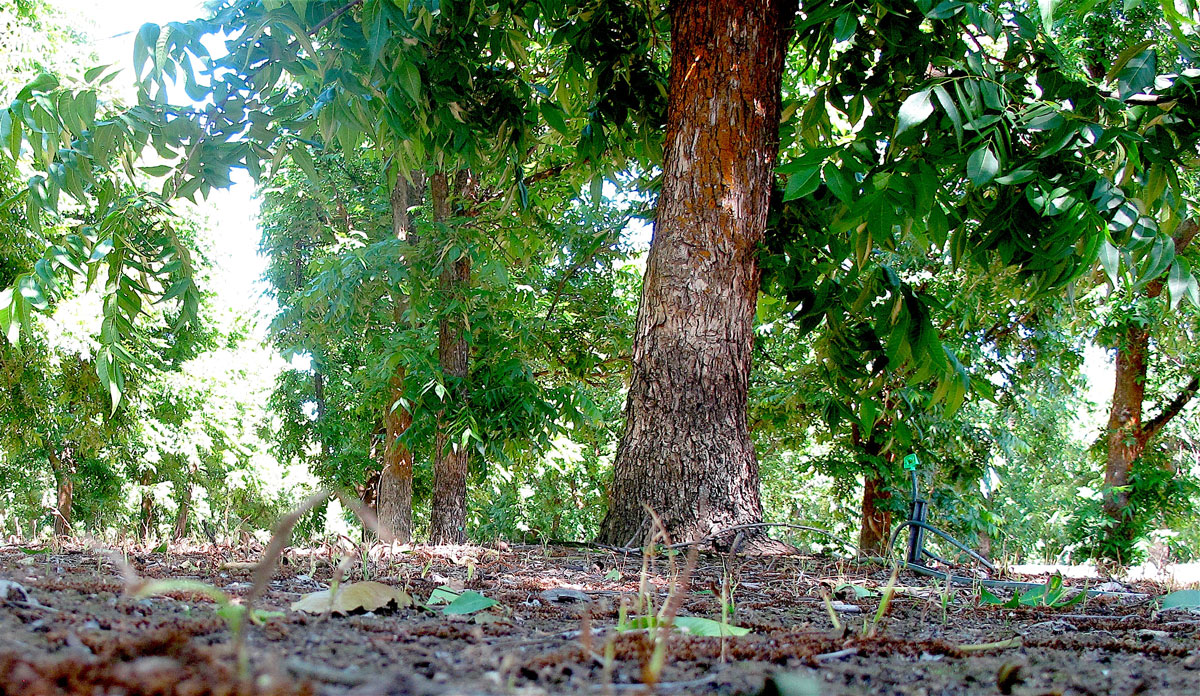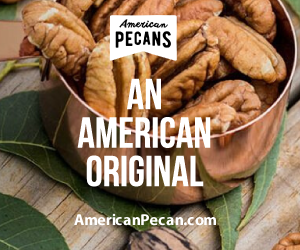
Other pecan growing states may have issues with pecan weevils, scab or pecan nut casebearer, but California’s number one pecan insect pest is the aphid.
Mark Hendrixson, a pecan grower in Tulare County, and president of the California Pecan Growers Association, said aphids are a constant issue in California pecans and moving to control populations early in the season is essential for crop protection.

His threshold for initiating control is low—half an aphid per leaf—and is due to the quick proliferation of this pest in early summer.
“You have to get them early and stay ahead,” Hendrixson said.
Aphids rob the trees of carbohydrates, their honeydew invites black mold, affecting respiration. Infested orchards not only lose nut quality from this year’s crop, but next year’s yields can be impacted.
The yellow pecan aphid appears first and the black margined aphid builds up later in the growing season. Both species are yellow with black markings. Aphids have multiple generations each year with numbers peaking in the spring and fall
According to the UC IPM guidelines, both aphid species feed on the underside of leaves. Black margined aphids feed on major leaflet veins, while the yellow aphids feed on the network of small veins throughout the leaf.
Aphid infestation in a pecan orchard deprives trees of carbohydrates and water, which impairs growth of shoots and roots. Black pecan aphid feeding causes bright yellow, angular, 0.4 square inch spots to develop on the leaves between the veins. The spots die and turn brown, and just a few such spots cause a leaflet to shed. Premature leaf drop results in poor nut quality and reduced bloom in subsequent seasons.
Aphid scouting should be done every 4-5 days throughout shoot and nut development. Sample five compound leaves on at least 10 random trees for a total sample of at least 50 compound leaves.
Hendrixson said the presence of beneficial insects that prey on aphids can make a difference in controlling aphids. Avoiding use of broad spectrum contact insecticides allows beneficial populations to grow. Insecticides that preserve beneficial insects will decrease aphid populations over time. Soil applications of imidacloprid are done early in the season and foliar sprays are done later.
Chlorpyrifos has been the tool of last resort for California pecan growers when aphid populations explode in an orchard, Hendrixson said. Early monitoring, sampling and preserving beneficial populations will help growers protect their crop.















